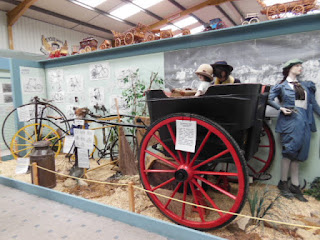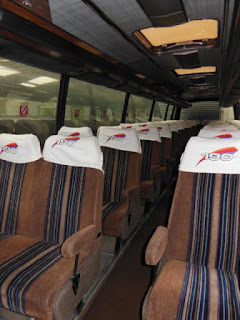One of my favourite scarves is Reve de Corail by Annie Faivre. Partly because of the gorgeous combination of red and white, but mainly because it reminds me of one of my favourite childhood stories by Carl Ewald. I don't know whether Annie Faivre was inspired by this story, but if she wasn't she jolly well should have been!
Carl Ewald was a Danish writer who was very popular in Germany as well. He specialised in writing stories for children which explained scientific matters in a simple way. My favourite is The Corals.
It isn't well known in the English speaking realm, certainly I have never met anyone who knew either Carl Ewald or his stories. This is a short retelling of the story.
A long time ago and far far away there lived a little coral with its family. But it was discontented, and wanted more than live the boring life of its large extended family - to wit, it wanted to build an island! An island with coconut palms and a sandy beach, large enough for people to live on. Although this idea was widely poo-pooed by all and sundry, our coral stuck to its dream, and one day took leave of the entire clan and swam away in search of a good spot on which to build an island.
When it found a likely spot, it firmly attached itself to a rock on the bottom of the ocean, and started to build up a layer of calcium carbonate. But it soon realised that building an island was a big job for one tiny coral! But did it give up its dream? Not this coral! Instead it asked whatever sea creature it could press into its service to spread the word that it was building a new island and needed other corals to come and help.
And such was the power of its dream, and its eloquent persuasiveness, that soon lots of other tiny corals settled nearby and joined its island-making activities. After a while, alas, the founder coral died. But its dream lived on! One generation of corals after the other worked on building that island, and whenever one was close to death it handed the dream and island-building task on to the next generation. One generation after the other they quietly worked away, and whenever one of them was flagging they reminded each other of the dream of the first coral, which had started the whole enterprise.
And the coral reef grew ever closer to the surface of the ocean ....
Finally one day the reef was high enough to surface from the water, and everyone was terribly excited - they had build a new island! When the island was big enough, the corals asked the waves to throw whatever plant debris floated in the water onto the island, so that it would decompose there and create soil. The waves, being congenial fellows, happily obliged. And soon the island began to build up some soil, and little plants began to grow, and eventually even a coconut arrived in the current, and grew into a large tree, just as the founder coral had dreamed. And the corals continued to work on the island, making it bigger and stronger, and hoping for the arrival of some people, to complete the dream of the coral.
And one day, many many generations of corals later, a small boat landed on the island, with a woman and a man and a small child. They looked the island over, found it to their liking, and build a little hut on it, and lived there happily ever after.
Just imagine, if a creature as tiny as a coral can build an island, what might you and I accomplish?
 |
| Can you see the little monkey on top of the teapot? |










































































